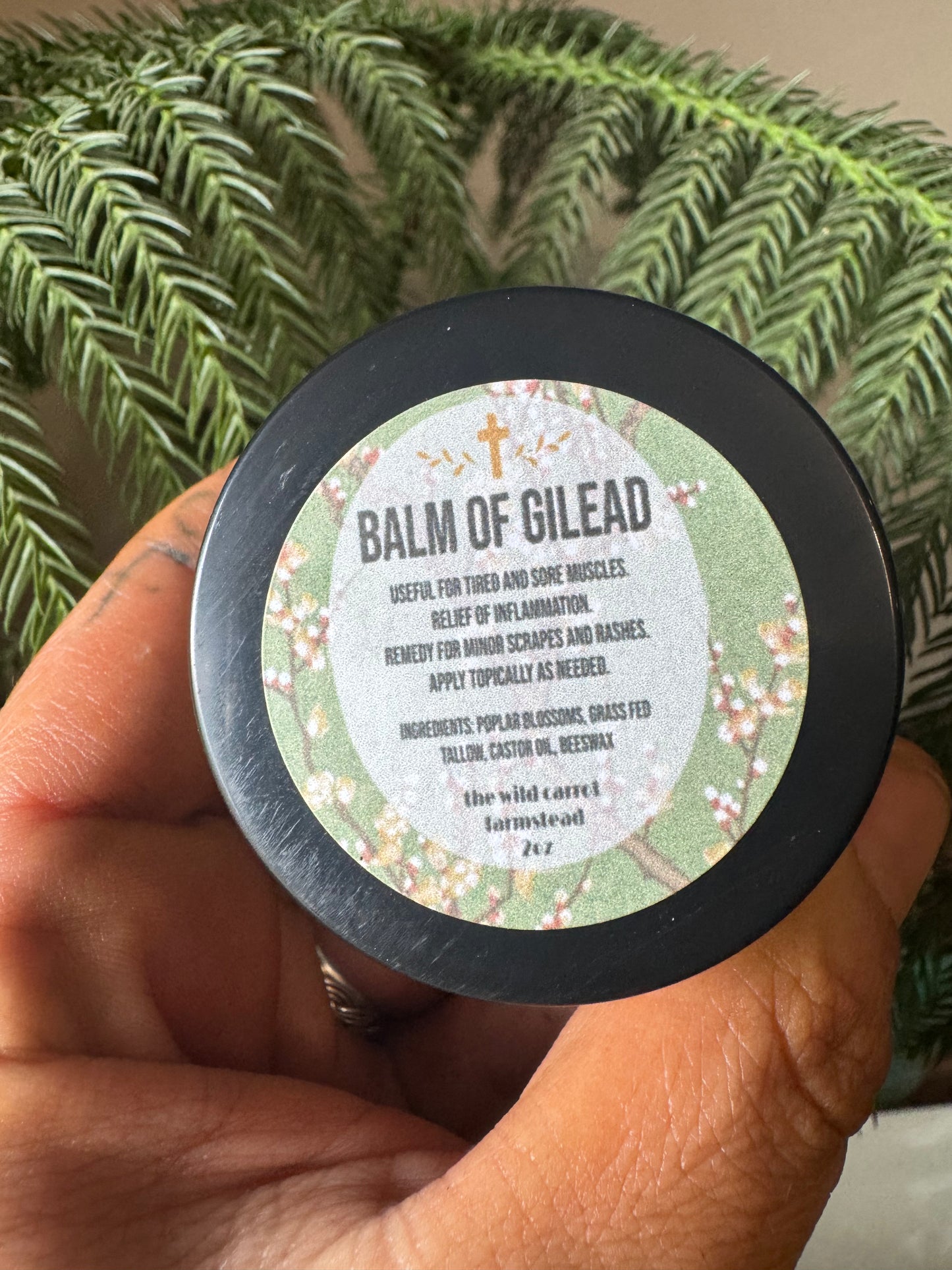WCFMarket
Balm of Gilead (2oz glass jar)
Balm of Gilead (2oz glass jar)
Couldn't load pickup availability
Today we are making the physical form of what closely resembles the one we read about in the bible.
•
The Balm of Gilead was probably used widely across the biblical lands during its time to treat a number of ailments that the resin of the poplar tree provides (and the base herb of what it’s made from).
•
From my bible studies years ago, I started researching poplar buds and found tons of anecdotal stories of poplar bud oil healing burns, wounds, broken bones, pulled muscles, asthma, bronchitis, arthritis, and the entire gamut of skin problems.
•
I considered these people were exaggerating about this balm being wonderful for ALL these things, until I came across an article in The US National Library of Medicine- Recent Advances Regarding the Phytochemical and Therapeutic Uses of Populus nigra L. Buds; and it just cemented all these stories and testimonies I had already been reading about.
•
There is a very small window of opportunity to collect the buds. They are at their most potent in the early spring when temperatures are still chilly. We go out collecting as soon as the snow is melted. And then dry and preserve them so we have access to them year around.
•
We don’t see the Hippocratic Oath come into effect until 500 BC, so how did people tend to their wounded and sick in the ancient world?
•
Short answer: Balms.
•
Long answer: Balms had several uses in the ancient world. They flavored mummified meat, perfumed and preserved the bodies of those who had passed, and they had healing properties.
•
The ancient salve mixtures could contain a number of ingredients from beeswax to balsam and poplar tree juices.
•
No matter what ingredients the particular balm of Gilead contained, we know they believed it could heal the wounded.
•
But this Sunday, I also want to touch on the popular question: does the balm have a deeper meaning beyond a physical salve for cuts and abrasions?
•
We, of course, know that Gilead did exist. It was a region east of the Jordan River. This particular land’s topography was mountainous and fertile. The tribes of Reuben, Gad, and half of Manasseh inherit this land (Joshua 13:24-31).
•
The balm, although real, also does have a deeper symbolic purpose in Scripture. God shows Israel, through imagery, that they’d turned to a temporary healing solution.
•
The Balm of Gilead has a deeper symbolic purpose in Scripture.
•
God shows Israel that they’d turned to a temporary healing solution, but they had far deeper spiritual cuts that needed ultimate healing. They needed the true physician, Jesus.
•
Yes, the balm might heal their physical wounds, but they had far deeper spiritual cuts that needed ultimate healing.
•
We encounter three instances of the balm of Gilead mentioned in the Bible.
Genesis 37:25 describes a caravan carrying balm on their way to Egypt.
•
When Jeremiah, in Jeremiah 8, hears about how Babylon will lay siege to Israel, Jeremiah weeps and asks if there is a balm in Gilead.
•
And once again, in Jeremiah (Jeremiah 46:11), God tells the Israelites to get a balm in Gilead, because they’ve wounded themselves beyond repair. He doesn’t literally mean get a physical balm to fix your problems. But they would’ve understood the imagery. No doubt, Gilead contained a balm of herbs and spices that served as a healing ointment.
•
So today, ask yourself: do we trust in temporary balms? Do we apply them to festering spiritual wounds? Or have we turned to the ultimate healing physician, who can truly cure our ailments?
•
Both balms and Jesus heal. But we should remember to always ask for healing from the Great Physician first, before seeking out any balm or salve. Heart posture is key.
This will keep for one year…right when the poplar blossoms come back again and are ready to be foraged!
This balm is to be used for minor scrapes and abrasions, sprains, and burns. But we especially use it for muscle pain and spasms and to help with inflammation. Think; a tired and sore muscle rub.

